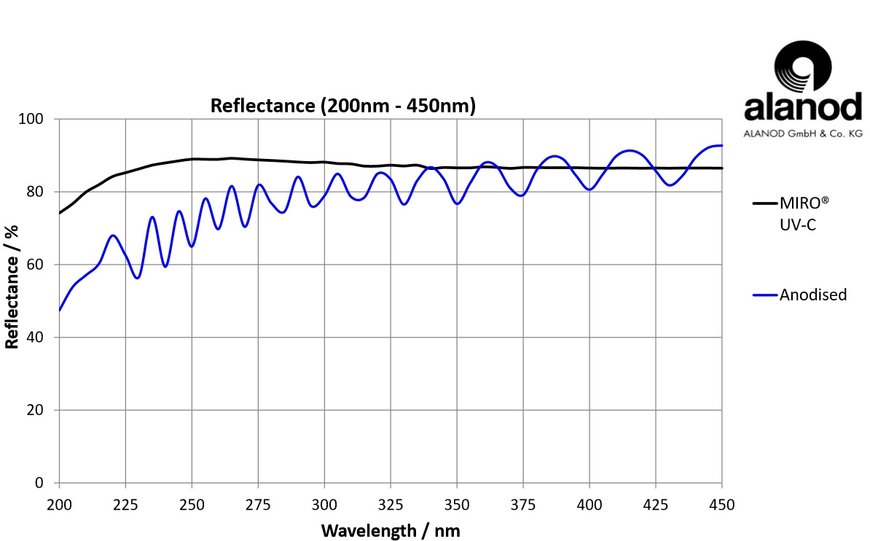smartbuildingmag.com
14
'20
Written on Modified on
Alanod News
Control airborne micro-bacterial diseases with UVC light and MIRO® UV-C
Airborne microbial diseases represent one of the major challenges to global public health. The most common examples are influenza, appearing in seasonal and epidemic forms, the current Corona virus (COVID-19), as well as bacterial diseases such as tuberculosis, which are emerging in increasingly multi-drug resistant forms.

UVC in the range from 207 to 222 nm
An approach to prevent the transmission of airborne diseases is the inactivation of the pathogens by far-UVC light. It has long been known that UV light has the ability to efficiently inactivate both multi-resistant bacteria and a multitude of virus strains. Until now, however, the use of germicidal ultraviolet light in indoor public locations has been limited because UVC radiation can pose a risk to human health and is known as being carcinogenic.
However, recent studies have shown that UVC light, generated by filtered excimer lamps in a wavelength range of 207 – 222 nm, efficiently inactivates resistant bacteria without posing a threat to human health. At very low dose rates, far-UVC light in such a wavelength range does not penetrate the outer layer of the human skin, but reliably eliminates bacteria and viruses. For example, at a dose of 2 mJ/cm² at 222 nm the radiation inactivates 95% of airborne viruses.
Reflecting 200 – 222 nm UVC wavelengths
Our MIRO® UV-C has been developed to reflect these wavelengths. Luminaires using such material reflect and concentrate the incident UVC light to where it is needed, whilst shielding areas not to be radiated. Build UVC efficient fixtures by using MIRO® UV-C to get the most efficient virus and bacterial killing systems.

www.alanod.com

